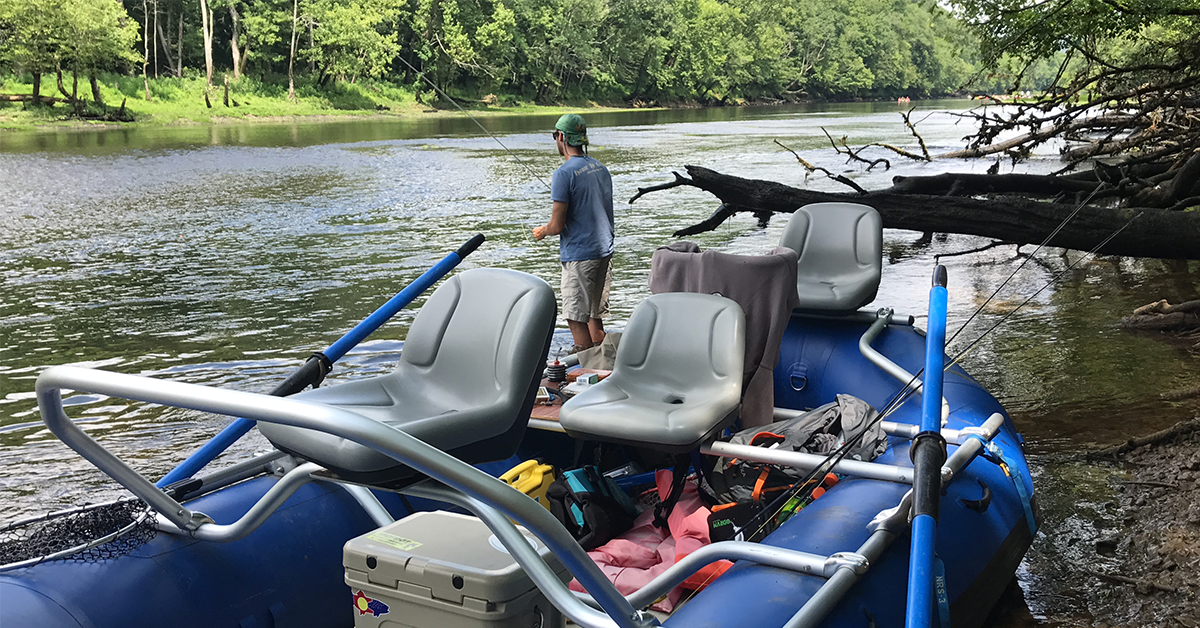Ensuring that one is versed in river safety is important; water is a powerful force. If possible, you should know the hydrologic behavior of the rivers in your local area before you plan on fishing them.
Freestone Rivers vs. Tailwater Rivers: An Overview
There are two main types of rivers that you will encounter: freestones and tailwaters. Freestone river flows are not inhibited/controlled by man-made structures and can rise and fall rapidly based on environmental factors. Tailwaters are the exact opposite. A tailwater is any river that is discharged from a dam.
Tennessee has multiple tailwaters. They release cold water from the bottom of lakes and in turn provide trout with the opportunity to hold over year-to-year. Without these dams, trout would not be able to thrive in most parts of Tennessee.
Every state has its fair share of freestone creeks/rivers. Knowing how a river’s flow is controlled will allow you to both be safe and fish it successfully.
Freestone River Safety
You will need to be able to read the maps and understand the gauges on the USGS Mobile Water Data web tool. It can be tough at first, but learning the trends of rainfall and how quickly waters in your area rise/fall can help you plan better fishing trips. The USGS Mobile Water Data tool gives you a map of waterways that are monitored by their large network of gauges. Each monitoring location will provide basic graphs and helpful data. The monitoring locations can include information on the following water metrics: temperature, gauge height (feet/cubic feet per second), pH level, dissolved oxygen (DO), and specific conductance. Monitoring stations may not include all of the above data points; each station is unique regarding data collection.
Tailwater River Safety: The Caney Fork River
To make this section as helpful as possible, we will use the The Caney Fork as our example of a popular tailwater river. The Caney Fork is created by Center Hill Dam. Center Hill Dam is owned and operated by the US Army Corps of Engineers (USACE). The USACE provide generation/release information to the Tennessee Valley Authority (TVA) and the TVA posts it online.
In order to safely fish any tailwater, you must be aware of the generation schedule. The generation schedule will let you know when the dam management agency will be turning the generators on. Each state has its own way of providing this data to the public. When the generators are off, most tailwaters seem very mild and gentle. However, once the generators come on, they start forcing a large volume of water into the river. This causes the river to gain speed and rise VERY rapidly. This is especially dangerous to fisherman wading in the river. They will sound an alarm but it is not easily heard downriver. Sometimes they do not sound the alarms at night due to the loud noise. The water rises quickly and if you try to cross the tailwater, you can step in to a deep run- filling your waders with water. This can be fatal.
Circling back to the Caney Fork, please check the generation schedule before going. You can find the information HERE on the TVA website. They will generally post the following day’s generation schedule around 5:00pm CT. Example: if today is Tuesday, Wednesday’s schedule should be posted prior to 5:00pm on Tuesday. If you can’t access the previous link, please call the TVA at 800-238-2264.
Can I take a boat on a Tailwater River?
You can float most tailwater rivers on a low-clearance boat during generation. However, every river is different and you need to check with people that regularly fish them from a boat to make sure you know what you are getting into. You will need to make sure you can safely operate a water craft. Kayaks are not recommended during generation; we have seen some very perilous kayaking situations out there. A drift boat or raft would be your best bet to safely fish a tailwater. Once again, always check the water schedules and ask regulars that frequent a specific tailwater to make sure your day of fishing in enjoyable and safe.


Leave a Reply
You must be logged in to post a comment.